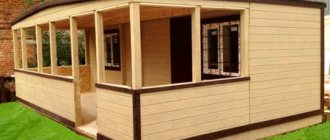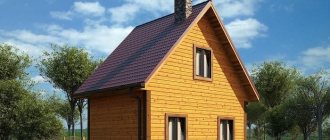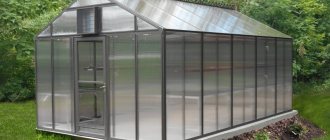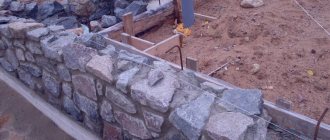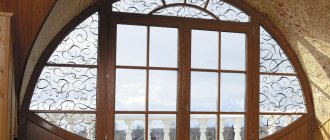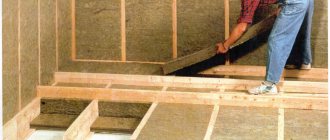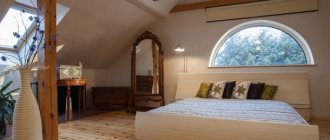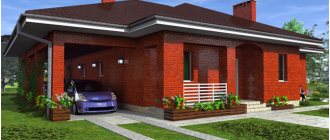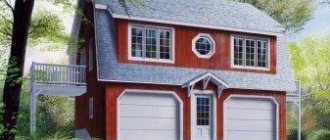If the area of a country house is small, then the best solution to increase it would be to build a veranda or terrace. It will become a comfortable place for the whole family to relax. But if in countries with warm climates this structure can remain open all year, then in our frosty winters it will have to be closed.
The best option in this case is glazing the terrace. In addition to an attractive view, protection from precipitation and cold, the owners receive a room with a panoramic view of the site.
Thematic material:
- What is the difference between a veranda and a terrace?
- Flexible windows for gazebos
Glazing options
Using windows instead of walls helps save on lighting. Those present have the illusion that they are on the street. But there is also a downside - the entire room is in full view of the neighbors. Therefore, in order not to end up on the veranda like in an aquarium, you should wisely select the type of glazing.
Frame
This method allows you to do all the work yourself and without outside help. Suitable for cold and warm glazing.
Other advantages include:
- the ability to replace elements without harm to the entire structure;
- availability of prices for materials and services of craftsmen;
- quick frame assembly.
The disadvantage of using frames is that they are only suitable for classical building shapes (square, rectangular). Non-standard sites are not equipped with them.
Frameless
Panoramic or soft glazing.
Photo: free-standing gazebo with frameless glazing
The fastening system consists of two profiles:
- lower bearing guide;
- upper
Roller hinges are installed on the glass at the bottom and top so that the sashes move freely along the guides, adapters are installed at the joints and sealant is applied.
For such glazing of the terrace of a country house, it is necessary that the frame of the building be assembled and the roof installed. The windows can be folded like a book or opened in a sliding manner.
If damaged, the glass breaks into small chips, which reduces the risk of injury to a person to a minimum.
Advantages of frameless glazing:
- it is suitable for sites of any shape and size;
- the veranda looks beautiful;
- 100% overview of the site;
- during the summer season, part of the structure can be removed to ventilate the room;
- maximum flow of natural light into the room, which means energy savings.
Among the disadvantages:
- impossibility of installing mosquito nets;
- high price of materials;
- low heat-saving indicators.
On such a veranda it will be colder in winter than when using a frame type. The solution is to install energy-saving glass packages.
Partial
It is used for extensions that are used exclusively during the warm season. Suitable for gazebos, balconies, canopies near bathhouses. Often these are wooden frames with single glasses, which are installed on the end sides of the structure. Their main purpose is protection from wind and slanting rain. This option will be cheap.
This material will be useful: “Making casing.”
Types of doors for the veranda
When glazing, several types of door designs can be installed:
- sliding ones on rollers move to the side along special runners, which allows, if necessary, to remove part of the wall, saves space, the option is used in both frame and frameless structures;
Sliding door to the veranda Source ar.decorexpro.com
- accordions do not take up much space when opening and closing, but have a rather complex design;
Accordion door to the veranda Source bonum.spb.ru
- hinged ones are a universal option; they are used for all types of glazing, but they require space for opening.
Classic swing doors to the veranda Source stroi-innovatsii.ru
At the exhibition of Low-Rise Country houses, a convenient demonstration pavilion of the Okna Street company is presented, where you can get acquainted with various door systems for verandas and terraces.
Sliding and folding accordion doors in the exhibition pavilion of the Okna Street company at Belaya Dacha Source oknastreet.ru
Choosing warm or cold glazing
Cold is used to protect premises from precipitation, wind, moisture, but its disadvantage is the inability to retain heat inside the veranda.
In late autumn, the temperature difference between the street and the building space will be no more than 5⁰ C.
Warm glazing is energy efficient because it retains heat inside the room with minimal losses. At an outside temperature of -20⁰ C, the building will be no less than + 21⁰ C.
Glazing with double glazed windows
If desired, you can glaze the veranda using ready-made double-glazed windows. In addition, this option for improving the terrace is suitable for heated and unheated rooms. Taking into account all the operating features of the building, certain types of plastic window systems are selected.
For a veranda that is poorly heated or not heated, it is best to choose double-glazed windows that have a special coating, and there will be an inert gas between the glasses. Most often, sliding glass panels with an aluminum profile are selected for the veranda. There are models of double-glazed windows that can be opened remotely using an electric drive.
In this case, glazing starts from the bottom of the floor and runs upward to the ceiling. Such glazing of the terrace creates excellent visibility and visibility, and also allows you to fully ventilate the room at any time. Installation of windows is carried out in the following order.
Opening doors are removed from their hinges, this is done in this way. In the upper loop there is a metal rod with a round head, it extends downwards, and in the lower loop the same rod extends downwards. After this, the door is removed, and the lightweight frame is installed in the prepared opening. Using special fasteners, the frame is attached to the racks. The resulting gaps between the frame and the stand are filled with polyurethane foam.
Important! When filling cracks with foam, do not fill all the free space, since when it swells, it can expand the window profile (frame). You need to fill the opening with foam to about 2/3 of the free space.
After installation and filling the gaps with foam, the removable frames are installed in place in the reverse order of removal.
Types of window opening systems
The choice is strictly individual. Each has pros and cons.
Sliding
Gaining popularity in the private sector. This is the optimal solution if you need to glaze a room with a small area.
The principle of its operation is that the sashes move along guide profiles. There are several location options:
- type of wardrobe;
- an accordion or a book.
Individual parts may be removable. Open doors are unnoticeable and significantly save space.
The sliding system is suitable for summer verandas and gazebos, but in winter there is heat loss.
If you decide to choose this type for year-round use, then it is better to take profiles made of plastic rather than aluminum.
Swing
Due to its affordable price and ease of installation, it is in demand among owners of summer cottages.
There are at least two opening options:
- The window consists of 2 sashes. If both handles are pulled towards you, they will open.
- If the window is wide, it is made of several parts. One half can open, but the other cannot.
The advantage of the swing system is a high level of thermal insulation with minimal losses.
If you decide to glaze the veranda area in this way, then it is important to correctly calculate the width of the windows. An open wide window (1 m or more) protrudes greatly from the opening.
Recommended window width is 0.6-0.8 m.
In addition, if desired, you can order sections with a rotary or tilt-and-turn mechanism.
Prices
The price for warm sliding windows for a terrace is approximately 2800 RUR/m² (the so-called semi-warm Sliders system with 1 glass 4 - 6 mm or a single glazing unit 18 mm).
Warmer swing PVC windows will cost more – from 3600 – 4800 rubles/m² (up to 5500 and 7200 rubles/m² depending on the number of chambers and the thickness of the glass unit).
Below is a screenshot from our official pricing page.
If you want to save money, order “light” PVC windows for gazebos and terraces. But it is not a fact that the room will be suitable for use in cold winters, since such structures have a thin profile, inexpensive double-glazed windows and are equipped with cheap fittings. Here are approximate prices for PVC windows for verandas and terraces (indicated not for square meters, but for entire windows of standard sizes):
- blind plastic window 1000x1000 – 3000 rub. (same, but opening – 5300);
- window 900x900 or 700x1300 with a hinged sash - 4800 rubles;
- window 800x1200 with 2 opening modes – 5300 rubles;
- double-leaf window 1200x1200 with one opening sash - about 6 thousand;
- double-leaf 1300x1300 (both doors are hinged, one with ventilation mode or with a window) - 9500 - 9600 rubles;
- three-leaf 2050×1450 with hinged doors, one with ventilation mode – 15300;
- plastic veranda bay windows 4700×1600 - about 16 - 23 thousand (up to 32 - 33 thousand if the doors open).
Approximate prices for panoramic plastic, wooden and aluminum windows for verandas/terraces (size – 2mx1m):
- PVC – 7,400 rub .;
- warm aluminum – 17,300 rubles ;
- wood – from 19,400 rubles (budget species).
It is profitable to order complex glazing, which includes all stages of window installation: from measurements to adjustment of fittings and finishing. But the price for hinged or sliding plastic windows for a terrace with turnkey installation will be significantly higher.
Glazing options
Polycarbonate
They are used in the arrangement of greenhouses, greenhouses, winter gardens, summer houses, and terraces. Available in several forms. Cell phones are considered inexpensive. It can be used to make not only walls, but also an interesting colored ceiling.
Photo: combined glazing. The front windows are ordinary glass, the roof and flanks are polycarbonate.
Its structure is very similar to plastic raw materials. Between the two plates there are transverse partitions resembling a honeycomb. They form longitudinal grooves in which air is retained, which becomes an obstacle to cold and noise. Hence the advantages of polycarbonate - excellent noise and heat insulation.
Other advantages include:
- light transmittance;
- the ability to disperse ultraviolet rays;
- high flexibility, which allows finishing structures of different shapes;
- large selection of colors;
- strength;
- light weight;
- low price.
No significant deficiencies were identified.
Polycarbonate sheets must be installed on a prepared metal frame.
Double-glazed windows
They are a set of glasses of different thicknesses mounted on a frame made of wood or metal-plastic. The number of layers (chambers) affects the price of the veranda. This material can be used to decorate not only walls, but also doors.
Photo: glazed veranda - part of the house
Pros: heat and sound insulation. The range is wide, so you can find an option for any budget.
The only drawback is that it cannot be manufactured at home, and it is better to entrust the installation to specialists.
To calculate the cost of glazing in advance, you should use a special calculator, the electronic version of which can be found on the Internet.
Stained glass
One example of unusual glazing of a veranda is the use of stained glass.
Photo: stained glass glazing
It is considered the art of painting on glass. Using this technique, paintings, floral patterns, and abstractions are created. With this design, there is no need to hang curtains on the windows, because the interior space is not visible from the street, but the illumination of the room is reduced. Natural stained glass is an expensive pleasure. Many dacha owners create imitation equipment using special films.
Tempered
It is considered the leader among all types of glass in terms of strength. It cannot be accidentally broken, so for glazing premises it is produced in sizes strictly specified by the design.
The price is high. Used for frameless installation.
Laminated
A beautiful solution for frameless structures. It has a multi-layer structure, therefore it has high strength and resistance to stress. If the surface is damaged, it does not crumble into fragments, but scatters into small crumbs.
Standard
Often used for self-glazing. Frame material - wood. Protects from moisture and precipitation. Strength and thermal insulation are low.
Modern materials
Most often, glazing of the veranda is carried out using frames made of the following materials:
- Wood – premium class products, a solution in a classic style. The positive qualities of this material are absolute naturalness, long service life and good thermal insulation.
- PVC is the most inexpensive and popular option. PVC windows provide good thermal insulation and do not require special care during operation. You can choose the appropriate color for a specific model. This type of profile has fairly high strength, which is ensured by a metal frame (metal-plastic windows). Structures containing inert gas between the glass panes guarantee adequate thermal insulation.
- Aluminum - these windows are structurally similar to PVC products, but are somewhat superior in strength.
Wooden frames for glazing verandas Source desalum.ru
What profiles are used for glazing
The choice depends on the type of glazing (cold, warm), the design of the building and the financial resources of the owners.
Aluminum
Among the advantages of the material are:
- Possibility of remote control of the structure.
- Individual parts can be easily removed, thereby turning the veranda into a terrace.
Photo: aluminum profile designed to look like wood
- Expanding the review. This is achieved thanks to glass doors mounted from floor to ceiling.
- Aluminum does not require special care.
- Does not corrode.
- The service life of high-quality profiles ranges from 70 to 100 years.
- A light weight. It is allowed to install such structures on lightweight foundations.
But when choosing, you need to take into account that such profiles are expensive and this metal does not retain heat indoors.
Therefore, when using the veranda all year round, you need to take care of the insulation and heating of the room in advance.
Wood
Refers to the classic glazing method. The cost of the profiles is determined by the type of wood, the structure as a whole - also by the size and quality of the sashes.
Among the advantages:
- Service life reaches 100 years.
- Possibility of replacing individual parts.
- High thermal insulation performance.
- Eco-friendly raw materials.
- They have a vapor-permeable porous structure, which allows you to maintain stable air microcirculation in the room.
The only drawback is the need for periodic maintenance. To extend its service life, wood must be treated with antiseptics and other means to protect it from moisture and insects.
PVC
Popular type of material. The main advantage is high thermal insulation of the room.
The kit often comes with a mosquito net, which is convenient when opening in the summer.
Other advantages of PVC include:
- Individual selection of models. Manufacturing windows of unusual shapes.
- Color spectrum. Imitation wood.
- Noise insulation.
- For PVC profiles, the openings are freely divided into sections.
- Different price levels.
- Ease of care. It is enough to wipe the windows with a damp cloth.
- Service life from 10 to 30 years, warranty.
- This type of glazing is hermetically sealed.
- Reinforced profiles can perform a load-bearing function.
- Easy to assemble.
Disadvantage - in the event of a breakdown, replacement of individual parts is impossible.
Possibility of independent work
You can glaze the veranda/terrace yourself if you choose a wooden frame structure. They make a preliminary design, study examples, photos of glazing. It is necessary to take into account the details at the design development stage. Start when the drawings are ready. To install the frame, you need a beam securely fixed in the grooves. Self-glazing is noticeably inferior to double-glazed windows made of wood. But the advantage is the ability to update windows using old frames. After cleaning and painting, you can use them to make your extension more attractive.
On a note!
The glazed roof provides a good view from an unusual angle. The design looks airy, but we must remember that glass is not the lightest material, so you need to take care of the reliability of the support.
Double-glazed windows significantly make the entire structure heavier. Only single-chamber ones are considered here, since double-chamber ones are too heavy. During roofing installation, a reinforced frame is built from:
- become;
- aluminum
A wooden-aluminum profile is also suitable, but it is less reliable - even specially prepared, treated wood is not immune to rotting over time. Metal-plastic profiles are not suitable for such structures, since they are not designed for such loads.
A properly installed glass roof is quite reliable. The use of monolithic polycarbonate can significantly simplify the task, making the weight of the roof significantly less. Then a complex fastening system will not be required.
Transparent roofs are being used more and more often, and with them the number of verandas with terraces, the structure of which includes a transparent roof, is growing. Design involves creating a roof that is pleasing to the eye and easy to clean. And you will have to clean it often. In addition, organizing the interior under a transparent roof with glass walls will require effort. The glass roof can be a nuisance in hot, sunny weather. To avoid discomfort in the summer, retractable shades must be installed above such a roof.
When buying material, the main thing is not to miscalculate resources. Polycarbonate glass is the most affordable material option. If the price is not important, you can install double-glazed windows.
We install windows with our own hands
Let's take a step-by-step look at how to glaze a veranda with wooden frames.
Sequence of work:
- We treat the timber or logs that will serve as a frame with an antiseptic and fire retardant.
- We install supports around the perimeter of the site. They break the structure into sections. The recommended step is from 1 to 1.2 m.
- We order frames or cut them ourselves. They must have a clearance tolerance of up to 5 mm.
- We fix the frames without glass vertically. We fill the gaps with polyurethane foam.
- We treat the inside of the grooves with silicone sealant.
- After a couple of minutes, you can insert the glass, and once again apply sealant around the perimeter of the windows.
- Traces of silicone are masked by a thin wooden strip (glazing bead) and at the same time strengthens the position of the glass in the frame.
It must be remembered that the height of the openings should not exceed 2.5 m.
You should not neglect the installation of ebb tides. In the case when the glazing is mounted on a base or parapet, they will serve as protection for the bottom seam from excess moisture and mold.
In addition, craftsmen advise making as many opening doors as possible for normal ventilation of the room, especially in summer.
Glass used
When performing glazing, various types of glass are used:
- standard glass in wooden frames is the simplest, most economical method of glazing;
Wooden frames and ordinary glass Source spec-okna.ru
- stained glass windows have a higher cost - they can be painted over completely to create shading, or partially;
Stained glass will decorate any veranda Source pinterest.de
- tempered ones are used when making frameless glazing and have high performance characteristics;
Tempered glass is usually used for panoramic glazing Source pallazzo.su
Photo gallery
In our gallery you will find options for glazing terraces and verandas, differing in materials, design, and shapes.
The veranda expands the living space of the house, and an excellent outlook brings you closer to nature, creating a cozy homely atmosphere.
Design and decoration of terraces
The design of the veranda is selected to match the stylistic design of the house. The interior of this room should not stand out from the overall composition. Most often, verandas are used as a relaxation room. A wide sofa, armchairs, and a coffee table are placed here. The outside walls are covered with hops, grapes or ivy, and the windows are hung with light curtains. When the dimensions of the room allow, its interior is complemented with a couple of shelves with books and a cozy fireplace. If a loft is chosen as the main direction, then brick prevails in the decoration, and it is better to choose glazing with aluminum profiles. Similar designs are suitable for high-tech and modern style. Provence, modern, classic, chalet, and a number of ethnic styles are more impressed by wood. Plastic is universal and can be combined with any modern styles, but it is not suitable for luxury apartments, where every element of the interior should be associated with luxury.
Okosyachka (casing)
The shrinkage of a wooden veranda is irreversible, so when glazing, an additional window frame is installed - casing. Window casing will prevent:
- bias;
- loss of tightness;
- deformation and destruction.
Because of the casing, windows do not react to the movement of the walls, so installation in a log house is mandatory. The casing blocks the vertical movement of the logs and strengthens the wall at the window location. The additional frame does not interfere with natural shrinkage and allows the wood to “breathe”.
Foundation load calculation
The amount of load acting on the foundation is the sum of:
- constant (the weight of all building structures including the foundation);
- temporal.
Live loads consist of:
- short-term (weight of people, wind and snow load);
- long-term (weight of furniture, equipment, glazing);
- special (seismic loads)
Wind and snow loads depend on the weather conditions of each specific region. Average snow load in Russia:
- 190 kg/m2 for Northern regions;
- 100 kg/m2 for the Middle Zone;
- 50 kg/m2 for southern regions.
The permanent load is calculated using tables of mass and density of a specific building material. It is not necessary to separately calculate the load from furniture and household appliances. The tables already contain a margin of safety, which makes it possible not to take into account the mass of individual items.
The weight of the walls is determined based on the material of the building. The area of the walls is calculated including window openings (simply multiply the height of the wall by its length).
Table of weight per square meter of walls (thickness 15 cm)
| Reinforced concrete | 350 kg/m2 |
| Brick | 250 kg/m2 |
| Logs or beams | 100 kg/m2 |
| Frame construction | 50 kg/m2 |
When making calculations, it is necessary to take into account the weight of the floors: multiply the floor area by the specific weight of the material.
Table of specific gravity of materials
| Reinforced concrete | 500 kg/m2 |
| Wooden beams (insulation density up to 500 kg/m3) | 300 kg/m2 |
| Wooden beams (insulation density up to 200 kg/m3) | 150 kg/m2 |
The weight of the roof depends on the roof area and roofing material. You can use the following table for calculations:
| Roof tiles | 80 kg/m2 |
| Slate | 50 kg/m2 |
| Soft cover | 50 kg/m2 |
| Metal | 30 kg/m2 |
The weight of the foundation is calculated taking into account its volume, material and design features. For example, the weight of a concrete foundation is equal to the volume of the foundation multiplied by the specific weight of reinforced concrete (2,500 kg/m3).
Based on these data, we can draw the following conclusion: the reliable foundation of the veranda, which is integral with the foundation of the building, can withstand almost any type of glazing. For a terrace attached to a house with a separate foundation, calculations will be required so as not to overload the fragile structure.
